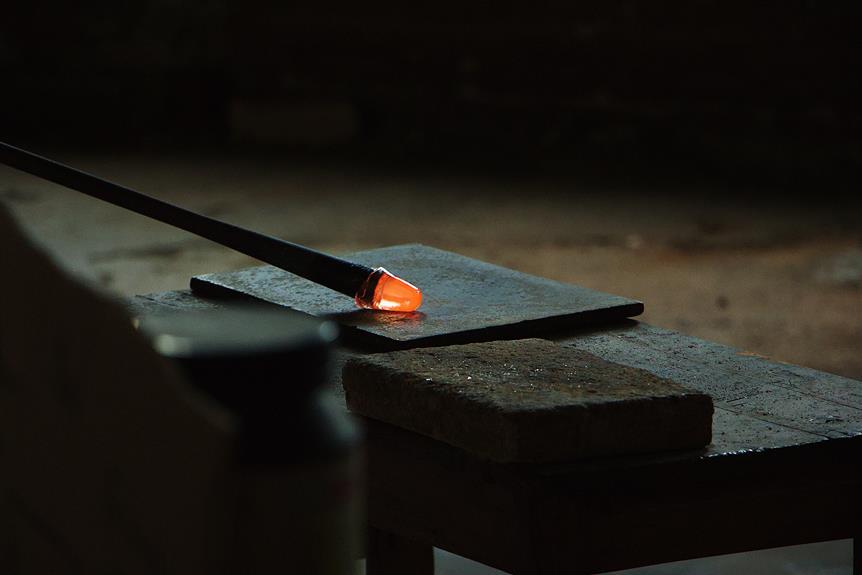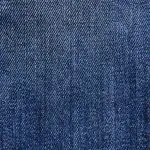Are you aware that using a hot knife for cutting fabric can reduce fraying by up to 90%? In the world of fabric cutting, the choice of tools can significantly impact the quality of your work.
This article will explore whether a hot knife is the best tool for cutting fabric, considering its advantages, disadvantages, and safety considerations. We will also compare it to other popular fabric cutting tools, providing you with the information you need to make an informed decision.
Whether you're a seasoned professional or a passionate hobbyist, understanding the intricacies of fabric cutting tools is essential for achieving mastery in your craft.
Key Takeaways
- A hot knife offers precision and prevents fraying when cutting fabric.
- It swiftly cuts through a wide range of fabrics without causing them to bunch or shift.
- The hot knife allows for intricate and detailed cuts, making it highly versatile.
- While a hot knife has advantages, it also has potential hazards and is not suitable for all types of fabric.
Advantages of Using a Hot Knife for Fabric Cutting
Using a hot knife for fabric cutting provides precision and prevents fraying, making it an efficient tool for achieving clean and professional results. The precise heat of the hot knife seals the edges of the fabric as it cuts, resulting in neat and fray-free edges. This level of precision is challenging to achieve with traditional scissors or rotary cutters.
The efficiency of a hot knife lies in its ability to swiftly cut through a wide range of fabrics without causing them to bunch or shift, saving time and effort in the cutting process. Additionally, the versatility of a hot knife allows for intricate and detailed cuts, expanding its utility beyond basic fabric cutting.
Durability is another advantage of hot knives. With proper maintenance, hot knives can last for an extended period, making them a long-term investment for professionals and enthusiasts alike. The durability of these tools ensures consistent performance over time, making them reliable for various cutting needs.
Disadvantages of Using a Hot Knife for Fabric Cutting
You may encounter limitations when using a hot knife for fabric cutting. While hot knives offer some advantages, it's important to consider the potential hazards and drawbacks associated with their use. Here are some disadvantages to keep in mind:
- Potential Hazards
- Hot knives pose a risk of burns and injuries if not handled carefully. The heated blade can cause severe burns if it comes into contact with skin, and the risk of accidental cuts is higher compared to using traditional cutting tools.
- The fumes emitted when cutting certain synthetic fabrics can be toxic. This can pose a health risk, especially if proper ventilation isn't available.
- Alternative Methods
- Using a hot knife requires a power source, which may limit its portability. Alternative tools such as rotary cutters or fabric scissors are more versatile and can be used without the need for electricity, making them suitable for various cutting situations.
- Hot knives aren't suitable for all types of fabric. For delicate or thin materials, alternative methods like laser cutting or pinking shears may yield better results without the risk of damage from excessive heat.
Comparison to Other Fabric Cutting Tools
When considering fabric cutting tools, a hot knife offers distinct advantages over traditional options such as scissors or rotary cutters.
In terms of comparison, the hot knife excels in efficiency, versatility, and precision.
Efficiency is a key factor as the hot knife effortlessly glides through fabrics, sealing the edges as it cuts, preventing fraying and eliminating the need for additional finishing. This saves time and effort, especially when working with synthetic materials that tend to unravel easily.
Additionally, the hot knife is highly versatile, capable of cutting through a wide range of fabrics including fleece, nylon, and polyester. Its ability to handle various materials makes it a valuable tool for a diverse range of projects.
Moreover, precision is another area where the hot knife shines. Its ability to make clean, accurate cuts without causing fabric distortion or jagged edges ensures a professional finish.
In comparison, traditional tools like scissors or rotary cutters may struggle with certain fabrics, leading to imprecise cuts and potential material wastage.
Safety Considerations When Using a Hot Knife
Ensure proper safety precautions are taken when handling a hot knife for fabric cutting. When using a hot knife, safety should be a top priority. Here are some key safety considerations to keep in mind:
- Proper Ventilation
- Adequate ventilation is essential when using a hot knife, as it helps to disperse any fumes or smoke that may arise from the cutting process.
- Proper ventilation also minimizes the risk of inhaling any potentially harmful particles that may be released when cutting certain types of fabric.
- Heat Resistant Gloves
- Always wear heat resistant gloves when handling a hot knife to protect your hands from burns or accidental contact with the heated blade.
- Heat resistant gloves provide an additional layer of safety and help prevent injuries while using the hot knife.
In addition to these precautions, it's important to have fire prevention measures in place, such as keeping a fire extinguisher nearby and working on a fire-resistant surface. By taking these safety measures, you can minimize the risks associated with using a hot knife for fabric cutting and ensure a safe and controlled cutting environment.
Tips for Choosing the Right Cutting Tool
Consider the specific fabric types you frequently work with when selecting an appropriate cutting tool. Different fabrics may require different cutting tools to achieve clean and precise cuts. Here are some tips to help you choose the right tool for fabric cutting:
| Fabric Type | Best Cutting Tool |
|---|---|
| Lightweight | Rotary Cutter |
| Medium Weight | Fabric Shears |
| Heavyweight | Electric Rotary Cutter |
| Delicate | Micro-tip Scissors |
| Specialty Fabrics | Hot Knife |
When working with lightweight fabrics such as chiffon or organza, a rotary cutter is ideal for achieving smooth, even cuts. Medium weight fabrics like cotton or linen are best cut with quality fabric shears to prevent fraying. For heavyweight fabrics such as denim or upholstery material, an electric rotary cutter provides the power needed for efficient cutting. Delicate fabrics like silk or lace require precision cutting, making micro-tip scissors the best choice. Additionally, specialty fabrics like synthetic materials or those prone to fraying can benefit from the cauterizing effect of a hot knife for clean, sealed edges. By considering the specific fabric types and their cutting requirements, you can select the best tools for fabric cutting.
Frequently Asked Questions
How Does the Heat From a Hot Knife Affect Different Types of Fabric?
When the heat from a hot knife interacts with different types of fabric, it can affect the fabric characteristics in various ways. The effect of heat on fabric depends on the specific properties of each material.
Can a Hot Knife Be Used for Delicate or Thin Fabrics?
When dealing with delicate or thin fabrics like chiffon or silk, a hot knife may not be the best tool due to their heat sensitivity. It's crucial to consider the fabric's properties before choosing a cutting tool.
Are There Any Specific Maintenance or Cleaning Requirements for a Hot Knife?
To maintain your hot knife, follow safety precautions, clean it regularly, and store it properly. Wipe the blade clean after use, and store it in a safe place. This will ensure the longevity of your tool.
Can a Hot Knife Be Used for Cutting Multiple Layers of Fabric at Once?
When using a hot knife for cutting multiple layers of fabric at once, ensure you prioritize safety precautions. While it can enhance cutting efficiency, it's crucial to handle with care and follow manufacturer's guidelines for optimal results.
Are There Any Alternative Uses for a Hot Knife Beyond Fabric Cutting?
A hot knife is versatile in metalworking applications, allowing for precise cutting of various materials. It's also effective for foam cutting techniques, providing clean and smooth edges. These alternative uses showcase the tool's adaptability and utility.
- Choosing the Right Fabrics for Babies - July 20, 2024
- Impact of Fabrics on Skin Health - July 20, 2024
- Benefits of Antimicrobial Fabrics - July 20, 2024




